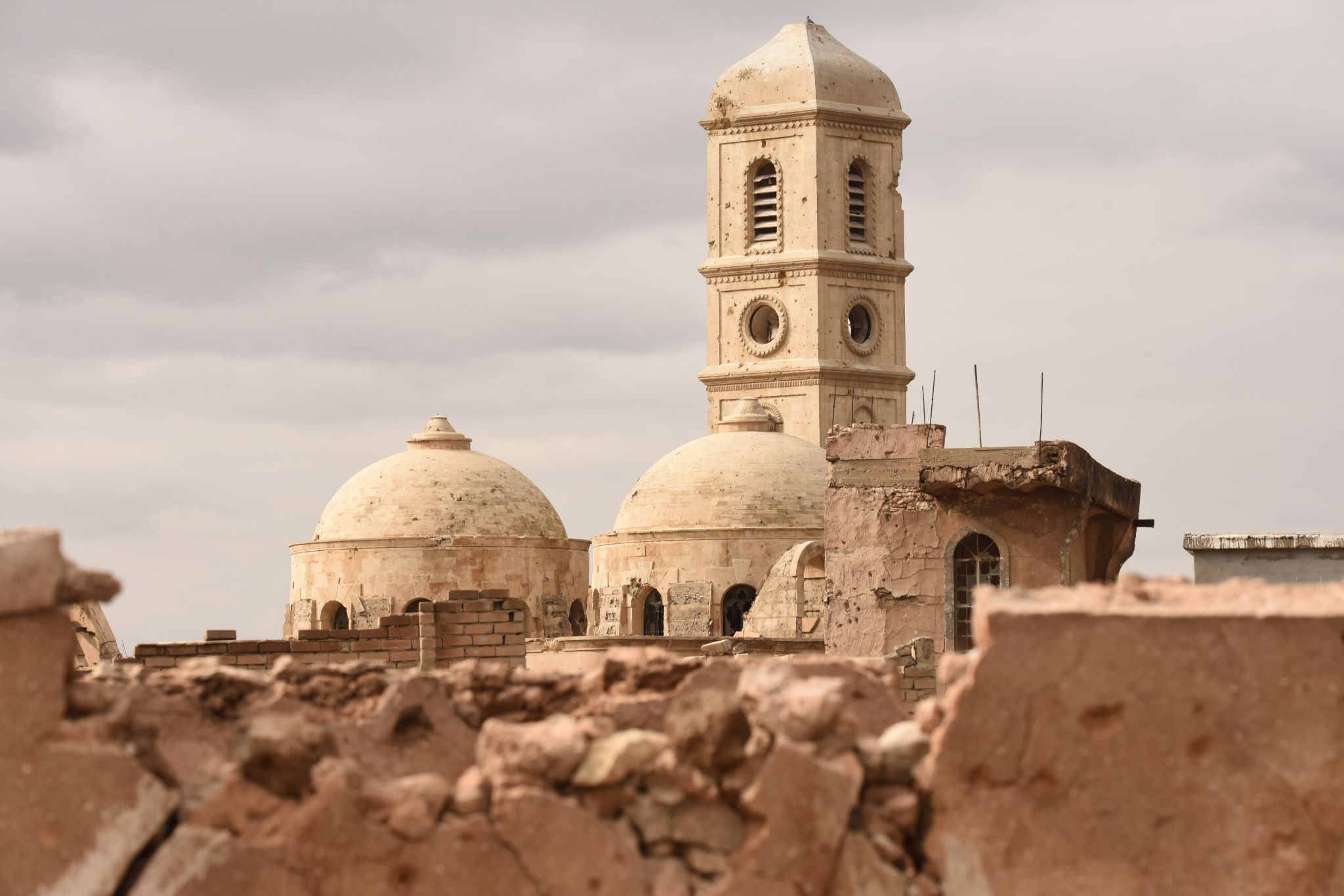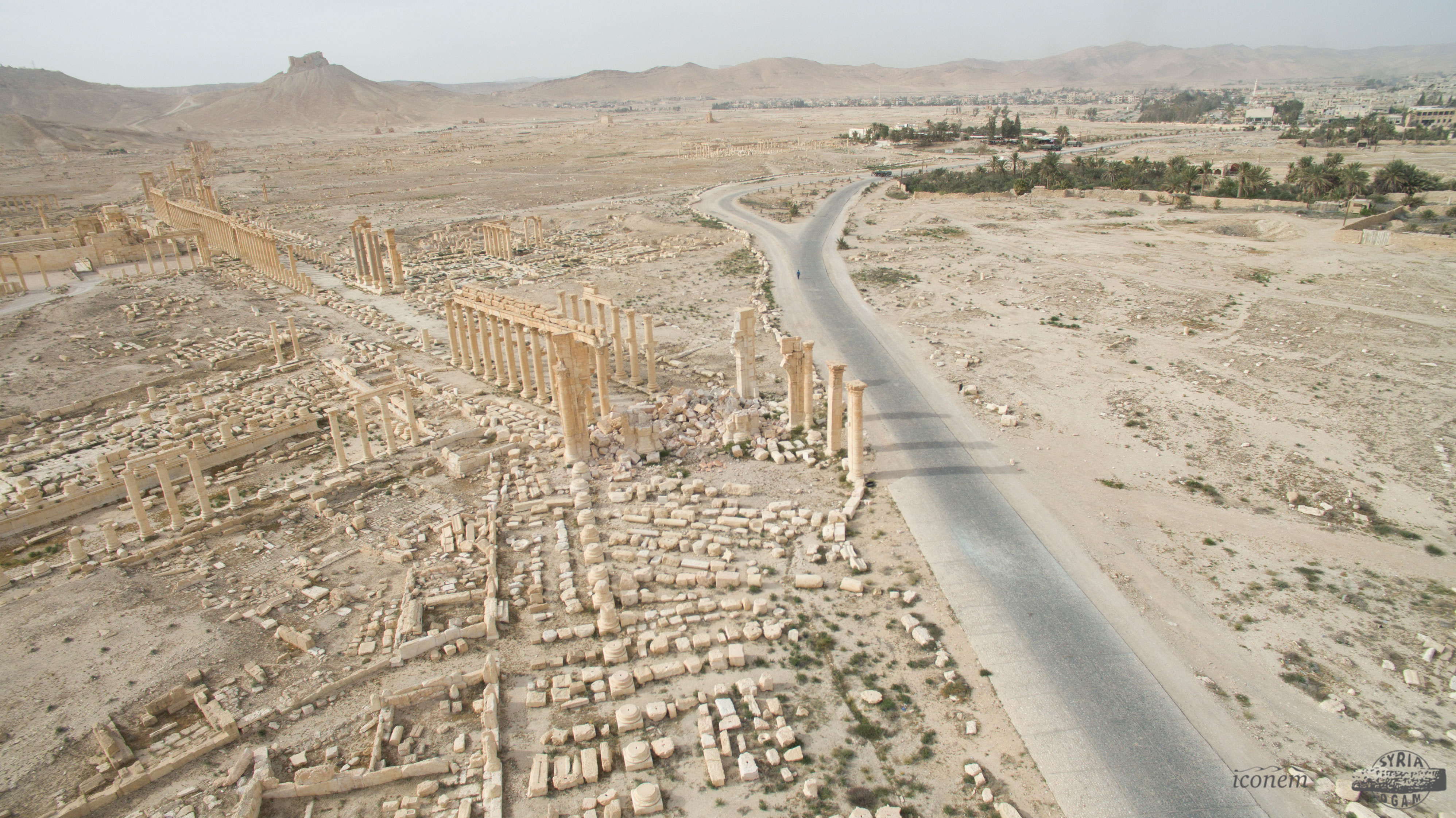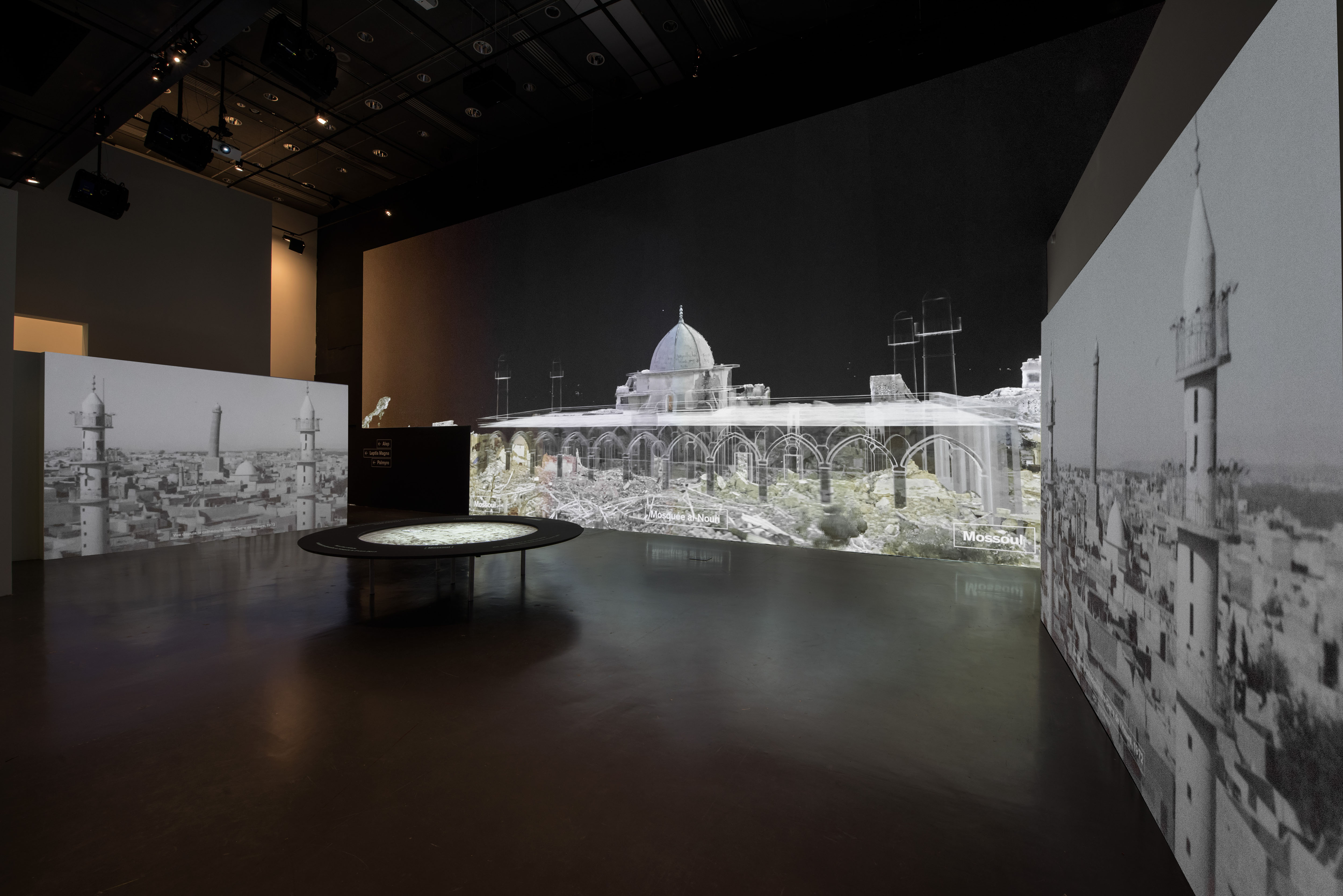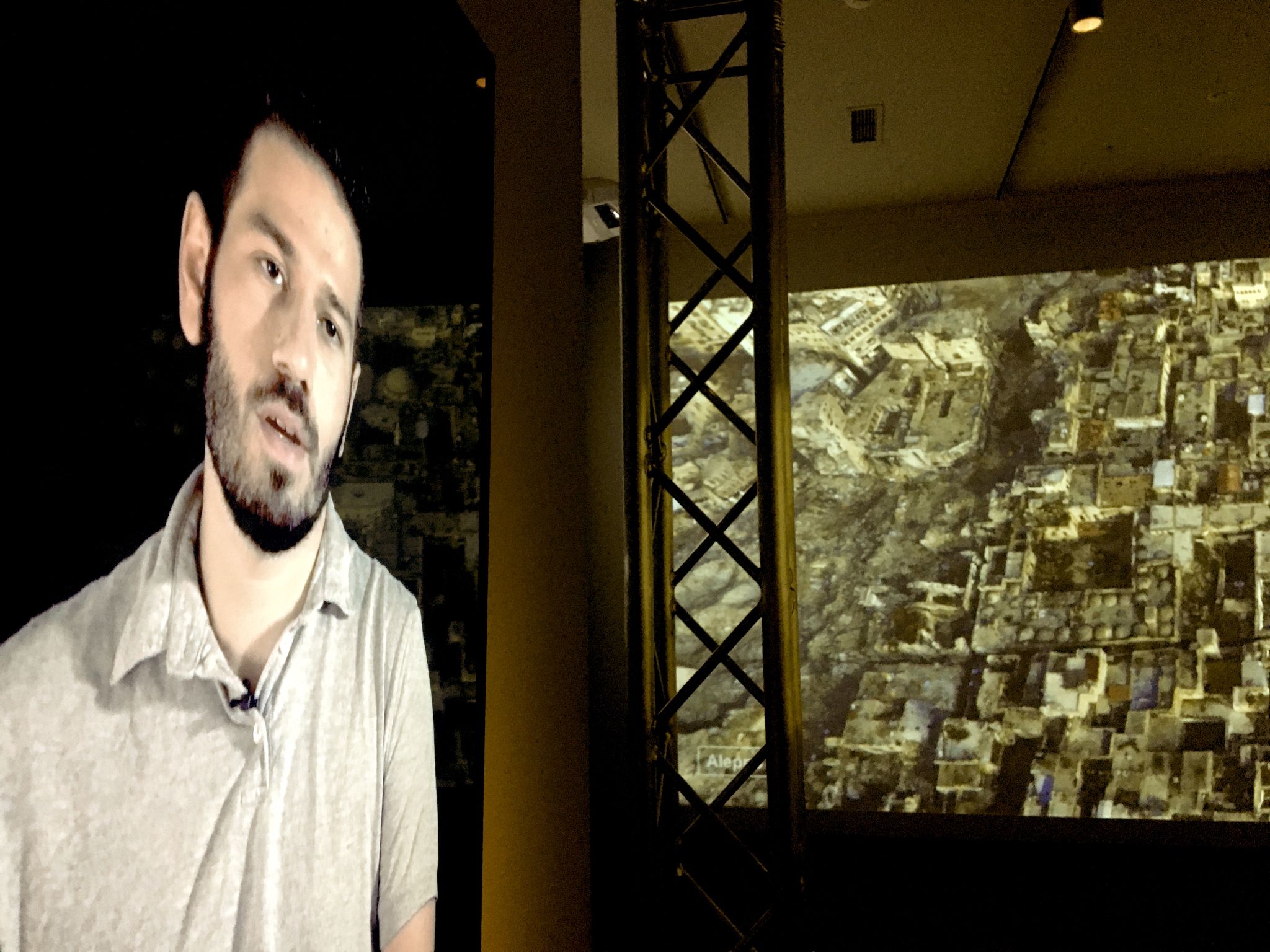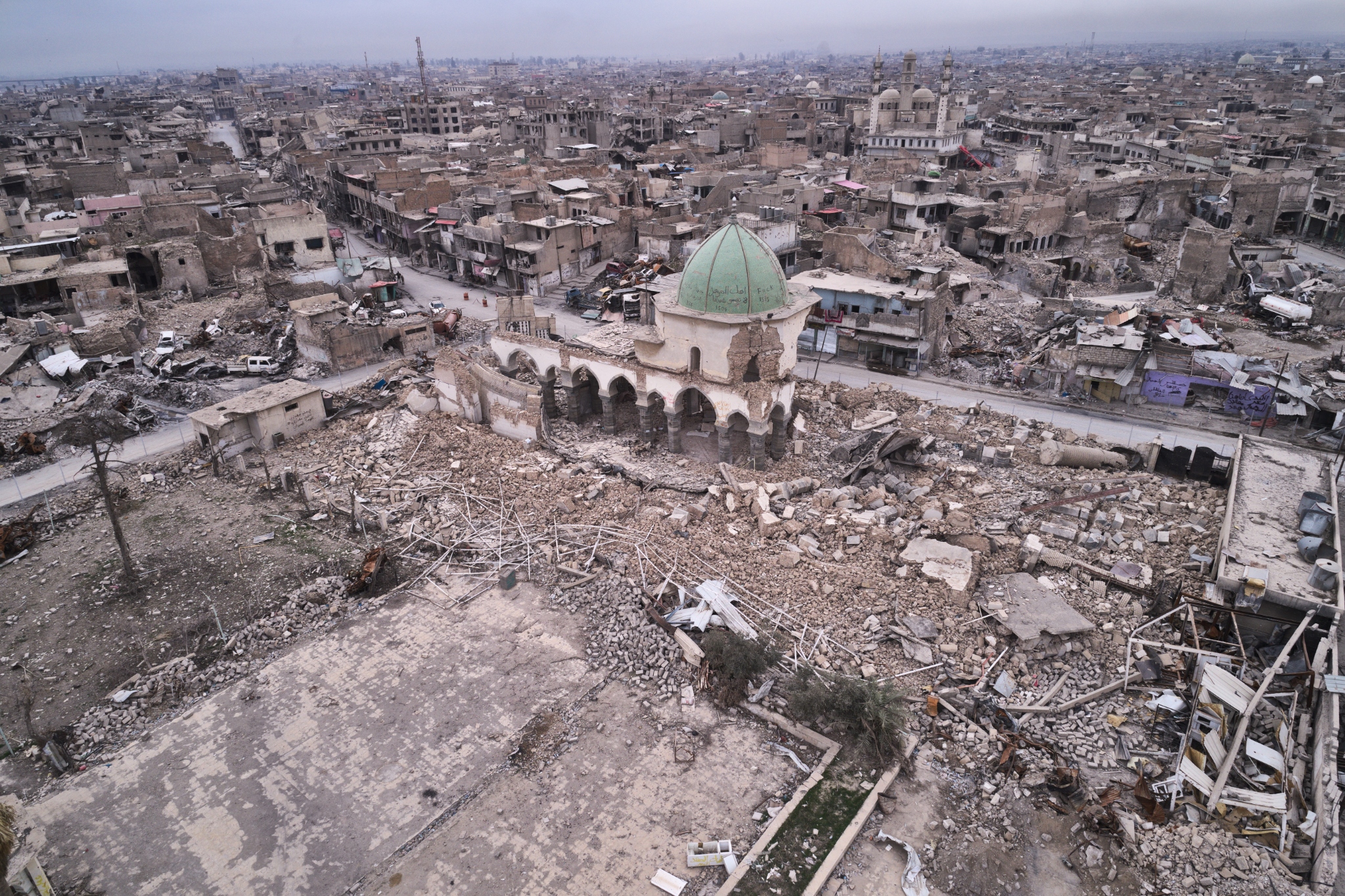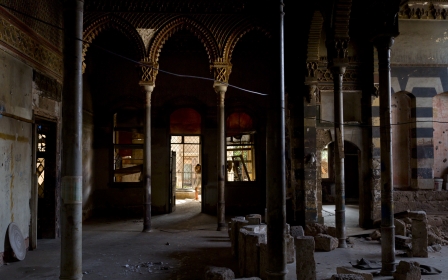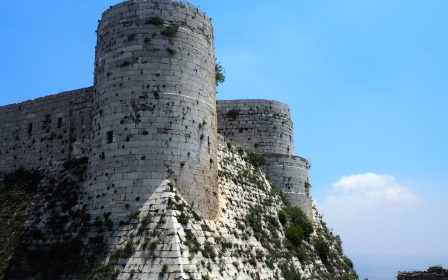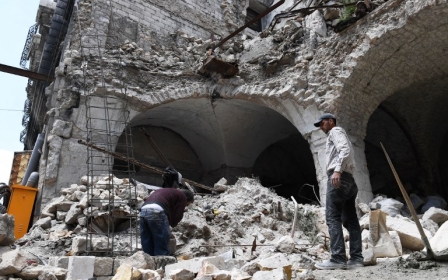'Pure human genius': Devastated ancient sites return to life in VR exhibit
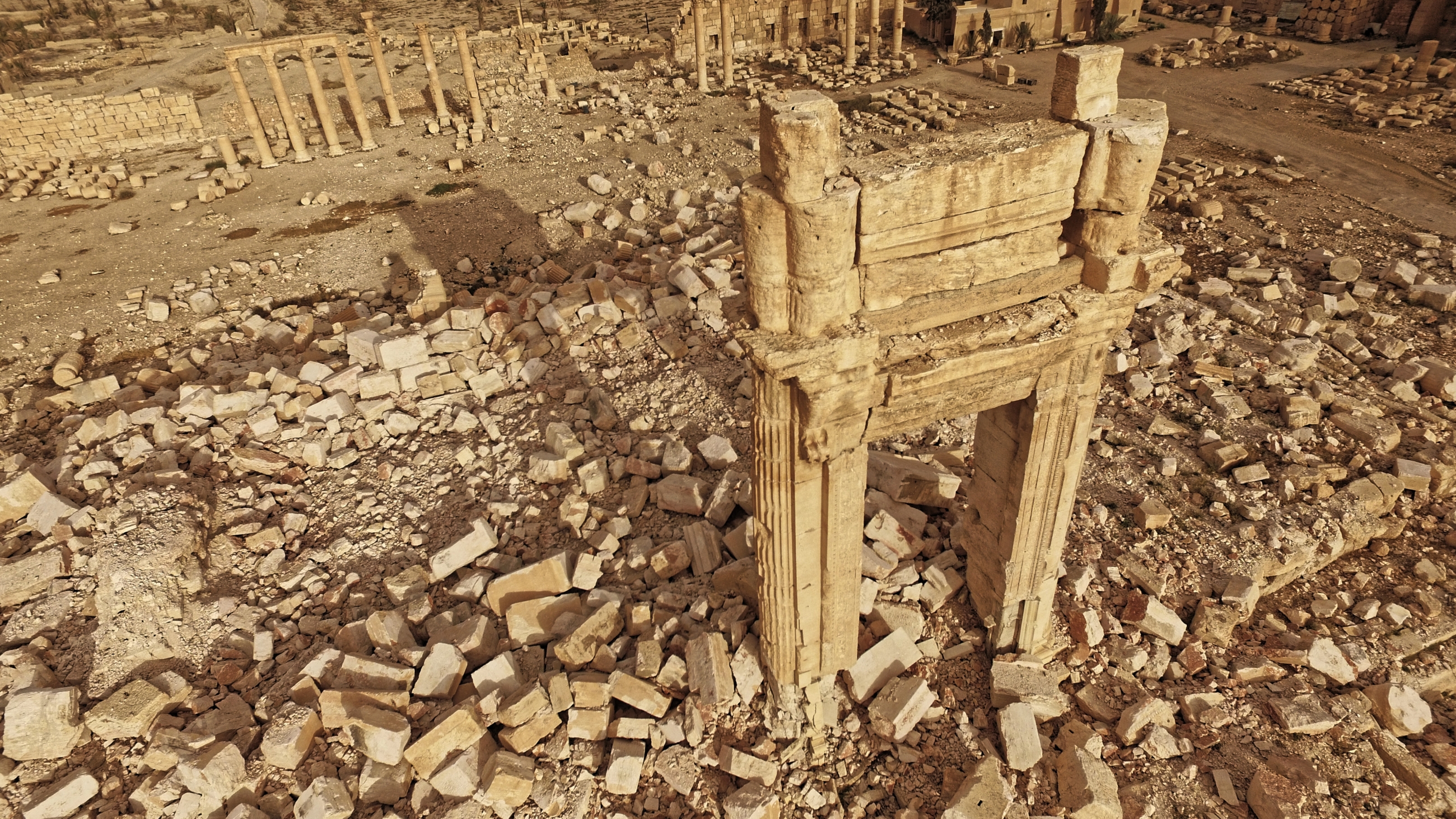
Sunrays pierce through oval skylights cut into the arched domes of Aleppo's devastated al-Madina souk, illuminating only slightly the ruins of the once-bustling marketplace. The hollowed sound of wind passing through the desolate bazaar is interrupted only for a moment with overlaid voices of market-goers from the past echoing off the stone of the souk's ancient walls.
The eerie scene is the first in the Virtual Reality (VR) exhibition "Age Old Cities: A Virtual Journey from Palmyra to Mosul" that opened in Washington DC's Freer Gallery of Art and Arthur M Sackler Gallery's Asian Art Museum at the Smithsonian on 25 January.
Taking visitors on a cyber journey through war-torn sites in Syria's ancient cities of Aleppo and Palmyra and the Iraqi city of Mosul, the exhibit aims to bring back to life Arab heritage now destroyed by conflict.
The virtual reality experience is brought by two headsets awaiting visitors in a small classroom, while further into the gallery is the much larger portion that features the gallery's 3D wall projection display.
New MEE newsletter: Jerusalem Dispatch
Sign up to get the latest insights and analysis on Israel-Palestine, alongside Turkey Unpacked and other MEE newsletters
Various panoramas of ruins from each city are projected onto the walls of several walkthrough rooms as 3D images and videos.
Different sites are featured in all the cities, such as Palmyra’s 2nd century BC Temple of Baalshamin and Mosul's Our Lady of the Hour Church, a catholic church built in Iraq in 1870 - both of which were devastated under the Islamic State (IS) group's rule between 2015-2016.
While many of the buildings and monuments featured from the cities have been destroyed, part of the experience is watching the 3D blueprints of the original building rise up transparently, their old glory overlaid on top of modern-day images of the destroyed sites.
Recreating history
The monuments recreated for the exhibit were "expressions of pure human genius", said Chase F Robinson, the Dame Jillian Sackler director of the Sackler and Freer Galleries. "Their damage, indeed their destruction, is one of the most spectacular illustrations of the price that culture has paid to war," he said.
Age Old Cities has toured in Paris, Bonn and Riyadh before arriving in DC in January. Sackler Gallery assistant curator Simon Rettig told Middle East Eye that the exhibit came to DC in the hopes that it would then be accessible to people from all over the United States.
The images were developed by the Arab World Institute with the expertise of 3D digital heritage project Iconem and video game company, Ubisoft, in partnership with Unesco and the University of Lausanne.
Teams used drones and cameras to create thousands of photographs from different angles. Those two-dimensional images, in coordination with architects, engineers, topographers and archaeologists, were layered together to create the exhibit's hyper-realistic 3D models.
Visitors can walk through the exhibit, and try the immersive VR experience, where they can come up close to sites like Aleppos's souk. Thousands of years old, the souk stretches some eight miles through the heart of the old city's ancient walled-off fortress. Until recently, it was the largest covered souk in the world.
Once at the crossroad of humanity's greatest trade routes, the labyrinth was known for its spices, raw silk, wool, handmade soaps and dyes amongst other goods for trade. It was destroyed in 2012, as rebel forces and the Syrian government battled for power.
One of Syria's several Unesco world heritage sites, a fire broke out during the fighting, with the blaze raging through the domed tunnels of the marketplace, some of which date back to the 13th century.
Following the fire, around 80 percent of the rebel forces in Aleppo banded together against the government, resulting in a four-year-long stalemate and eventually a government siege around the city. The city was recaptured by Syrian President Bashar al-Assad's forces in 2016.
Clear photographs of Aleppo's famous sites from the last 100 years play through the walkthrough version of the exhibit, giving visitors a chance to see life as it once was, while the VR experience puts guests right inside the walls of the various ruins.
Transported by virtual reality
In the small VR room, two chunky plastic goggles dangle off metal stands that are wired to the laptops feeding 3D images into the headsets. Other guests wait their turn to watch the VR experience, which lasts around five minutes.
"I know that mosque, I've been there with my son," one wired-up participant exclaimed, pointing at what in reality was a brightly lit teal wall just four feet away.
Inside the headsets viewers are transported in a moment from Allepo's souk to an underground cavern: the Nabi Yunus tunnels of Iraq's Mosul. The tunnels were discovered after the Islamic State (IS) group in 2014 blew up a 12th-century mosque believed to hold the tomb of the prophet Jonah.
Carvings inside the tunnel network are believed to date back to the Neo-Assyrian period (911–609 BC), nearly 3,000 years ago. The dark, damp-looking cave beckons viewers to explore its caverns, but the VR only allows a couple of feet of movement in any direction.
After a brief flash of black, the VR loads the next scene. The cave system is gone and virtual sun beams down, reflecting so brightly off the expansive landscape of Palmyra's limestone, that for a moment the enchanting illusion makes one squint. A small lizard scuttles between a broken pillar strewn on the ground amid the ancient rubble.
White text floating in the air to the right explains that this was once the Temple of Baalshamin. The temple, dedicated to the Canaanite sky deity, was constructed over 5,000 years ago.
Inside the exhibit's VR world, a translucent structure of the now-destroyed temple's walls grows out of the ground, giving visitors a glimpse of what once was. The expansive landscape of Palmyra's bright limestone stretches out along the extended wall section of the walkthrough exhibit.
Palmyra was established back when the land was a desert oasis, 2000 years it falling under Roman rule. Long after its 2nd and 3rd millennium BC heyday, it was seized by the French in the 1920s, when colonial excavation projects forcibly relocated all of Palmyra's residents out of the area around 1932.
The Islamic State group captured the historical site on 21 May 2015, planting landmines and systematically destroying monuments. They were pushed out by government forces in March 2016, before briefly retaking it that December.
'I'd never thought of visiting it'
The exhibit does not just focus on the ancient losses of the land. A television hung on the wall inside the walkthrough part of the exhibit features testimonies from former residents of some of the war-torn cities.
"I thought it was - and always would - be there and that I could go there whenever I wanted,"
- Shadi Alawad
Shadi Alawad, a young man from Aleppo, explains to visitors in screened footage how thankful he is that the ruined sites of his country have been recreated in virtual form.
A brutal government crackdown on pro-democracy protests broke out in 2011 before spiralling into all-out war, which has so far left around 500,000 people dead and 13.5 million people displaced.
Alawad was one of those who fled near the start of the war, leaving Syria in 2013.
"I spent my whole life in Aleppo, but what's sad is that an ancient citadel like the one in Aleppo which spanned civilizations - I'd never thought of visiting it," Alawad said. "I thought it was - and always would - be there and that I could go there whenever I wanted. But I never went there."
First arriving in Lebanon, then Turkey, Alawad finally made it to Europe, settling in France where he has lived for more than four years.
"There was the war, the citadel was hit, and I could no longer visit it," Alawad said, his testimony playing on a loop in the exhibit.
"I went to France, and I saw that the people there had the same attitude. When I say to them: let's go to the Eiffel Tower, let's go to the Louvre, they reply 'the Eiffel Tower and the Louvre will always be there' - they've never been there."
"I hope people visit these monuments before something bad happens," he continued, warning that any site, even the oldest and most cherished, can become enveloped by disaster.
On display at the Smithsonian Museum until 25 October, future destinations for the Age Old Cities exhibit have yet to be announced.
Middle East Eye delivers independent and unrivalled coverage and analysis of the Middle East, North Africa and beyond. To learn more about republishing this content and the associated fees, please fill out this form. More about MEE can be found here.


